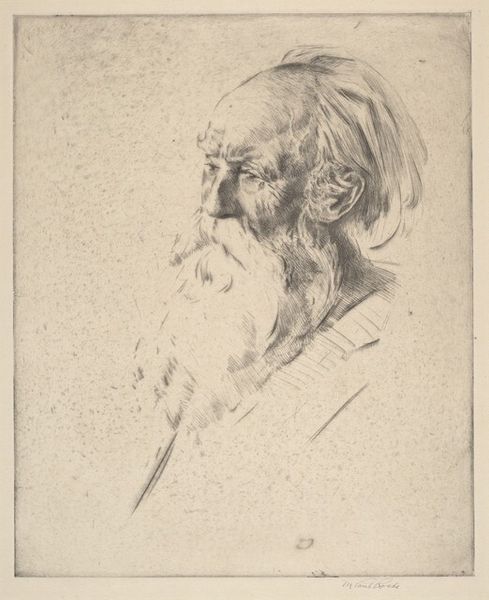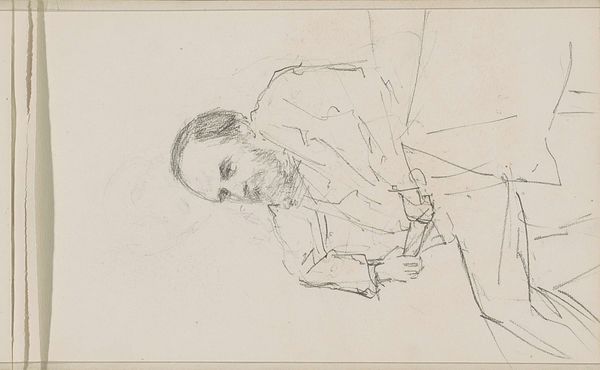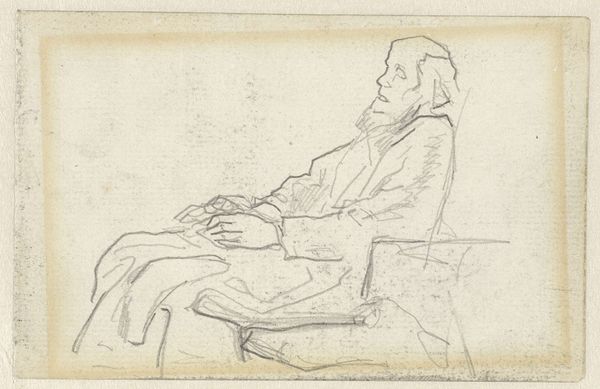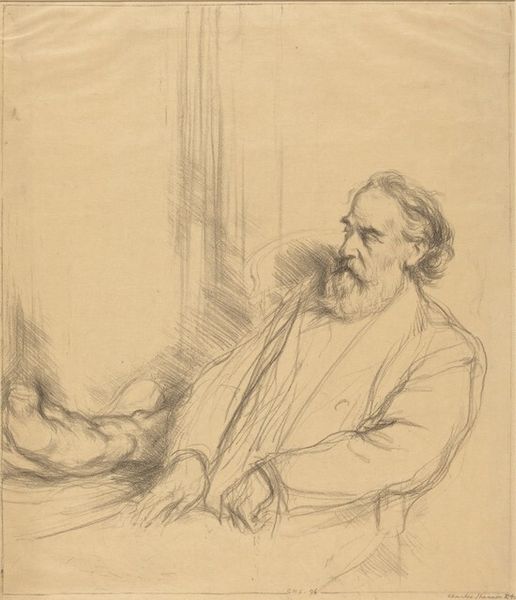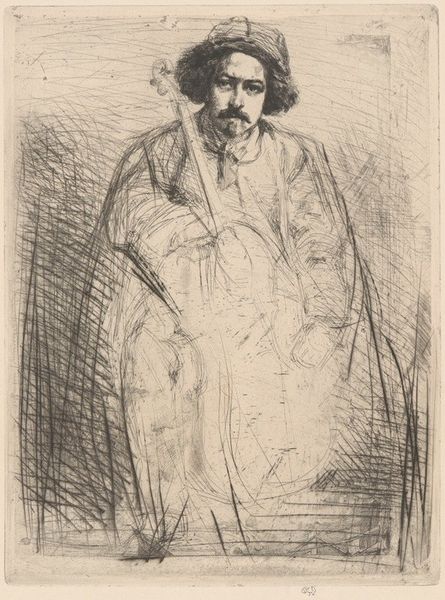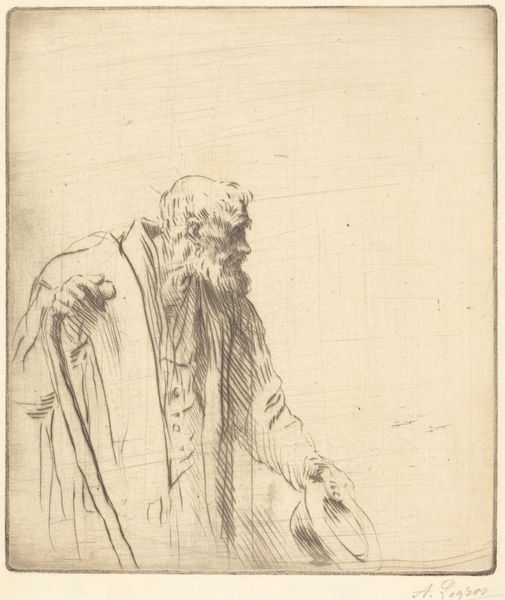
drawing, print, etching, engraving
#
portrait
#
drawing
# print
#
etching
#
portrait drawing
#
engraving
Copyright: National Gallery of Art: CC0 1.0
Curator: Here we have William Auerbach-Levy’s print, an etching and engraving titled “Old Man.” Editor: Whoa. Instantly I'm hit by the…weariness in his posture, like he's carrying lifetimes on his shoulders. Is it just me, or is there a whole saga etched onto that face? Curator: Indeed, and the medium contributes significantly to that feeling. Auerbach-Levy’s choice of etching and engraving is quite deliberate, rooting the work in traditions of portraiture used to convey social standing and personal narrative, though here, absent other markers, it’s more an everyman he presents. Considering that the piece probably dates from the early to mid-20th century, we might also think about how images of elderly men served as ciphers of wisdom, endurance, but also loss and obsolescence, themes certainly echoed in literary Modernism. Editor: Absolutely. You feel this huge weight. The kind of life that leaves these little, you know, trenches and shadows all over the face. He looks like he's seen a lot and probably hasn't had an easy time of it. The etching really amplifies the texture, doesn't it? All those fine lines…makes him feel so present. It’s intimate, though I wouldn’t call it flattering. Curator: Precisely. And that tension is key. He is not idealized, yet he holds our attention, urging a confrontation with vulnerability. It begs questions, doesn’t it, about representation and aging. He’s caught there, balanced between resilience and decline, an observation shaped by shifting 20th-century attitudes toward elder care and labor’s evolving place in societal values. Editor: I see what you mean. Thinking of him framed in that moment… well, his quiet stoicism is hard to ignore, and hard not to admire on some level, but there's also a sense of…invisibility? The way he seems to sink into the chair itself, how his shirt becomes kind of shapeless and blends. Is that part of the message, you think? Curator: It's definitely part of the story. He blends into the etching; he is the texture. Perhaps, in its unsentimental view of old age, Auerbach-Levy provides a moment of unflinching insight. Editor: Yeah, totally. Gives you a lot to think about, this piece. A whole lot to feel. Thanks for pointing out those historical bits, that shifted my perspective in an amazing way. Curator: My pleasure; now, I see the etching differently as well.
Comments
No comments
Be the first to comment and join the conversation on the ultimate creative platform.

